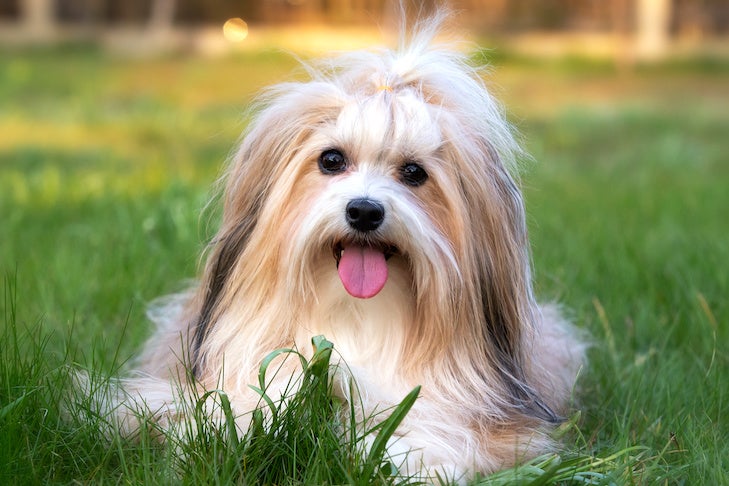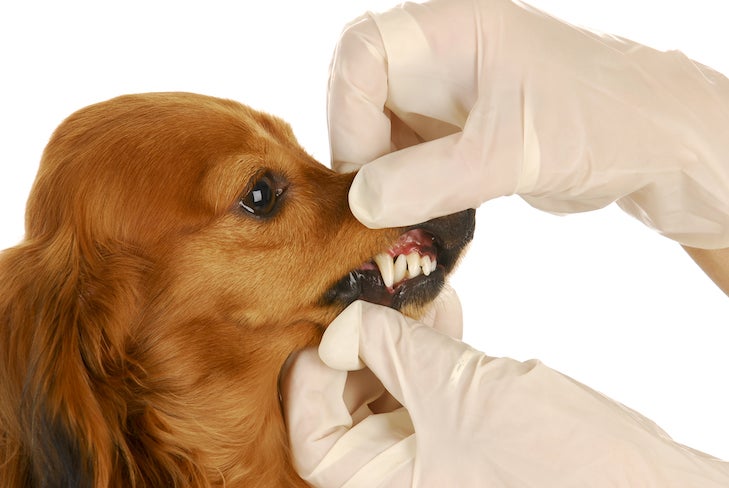[ad_1]
When dentists promote dental firms for folk, it’s all about creating pretty smiles. Nevertheless for canine, the veterinary reminders rapid a particular story, as canine dental points go deeper than a toothy grin. Small and large canine experience varied sorts of dental factors—all beginning with the dimensions of their mouths. Grownup canine have 42 tooth—20 on the very best, 22 on the underside. Puppies have 28—14 on the upper jaw, 14 on the lower jaw. Whereas the mouths of big canine can accommodate all these tooth, the jaws on small canine do not.
Small Canine, Petite Mugs
“An important dental downside for little canine is periodontal sickness,” says Jan Bellows, DVM, Earlier President of the American Veterinary Dental School and a Board Licensed Veterinary Dentist in Weston, Florida.
Turning into all 42 tooth in a small mouth is an issue. By the purpose they’re 12 years earlier, Toy breeds often have solely half of their tooth “Their mouths are crowded, and tooth develop shut collectively and at odd angles,” says Dr. Bellows. Consequently, plaque builds up, turns into tartar, and meals bits turn into lodged between the tooth.
For example, when of us eat popcorn and a kernel will get caught between their tooth, they’ll brush or floss to remove it, nonetheless canine can’t.“When the tartar accumulates, an an infection items in beneath the gum line,” says Tony Woodward, DVM, a Board Licensed Veterinary Dentist in Bozeman, Montana.


“With some brachycephalic canine, tooth might even develop in sideways. A troublesome piece of meals can hold there for years,” Dr. Woodward says. “Many little canine don’t chew their meals as so much—notably within the occasion that they’re fed quite a lot of mushy meals, so additional plaque and calculus assemble up and leads to irritation of the gums.”
Routine dental care guards in direction of periodontal sickness, tooth loss, and an an infection, which can make consuming painful and troublesome.“Small canine can have abscessed tooth and conceal it so successfully that their householders in no way suspect a difficulty,” says Dr. Woodward. “This potential to not current weak spot goes once more to their canine ancestors who wanted to defend themselves from predators.”
Unhealthy breath isn’t solely about smelling a foul odor. It’s typically a sign of periodontal sickness and often accompanies purple, contaminated gums that bleed merely. Small canine with putrid breath need educated dental cleaning on the veterinarian’s office beneath anesthesia twice a yr.
“Non-essential dental cleaning with out anesthesia will solely take away ground tartar,” says Dr. Bellows. “With out anesthesia, it’s unimaginable to attain below the gum line.”Although widespread tooth brushing is commonly advisable to keep up tartar from accumulating on tooth, Dr. Bellows recommends wiping the tooth a few occasions a day after a meal. The friction can also assist take away plaque, notably on the lower jaw. Within the occasion you see yellow or brown stained tooth, the canine has already fallen delayed for educated dental cleaning.
Huge Canine, Big Choppers
Huge canine are faraway from immune to dental points, nonetheless the causes differ significantly from smaller canines. “The primary factors are fractured tooth and trauma,” says Dr. Woodward. Powerful and tumble large breeds thrive on going after sticks, participating in tug with one different canine or their proprietor, and chewing on onerous objects, paying homage to antlers or bones.
Sadly, these actions lead to breaking the chewable once more tooth. If vigorous play wasn’t ample to set off dental damage, grabbing the roots of a tree, chewing rocks throughout the yard, or bumping heads with one different canine after going for the same toy set off tooth trauma. The American Dental School research evaluation reveals that virtually a third (20 to 27 p.c) of canine victims have fractured tooth. “One different dental problem for Labrador Retrievers and Golden Retrievers is oral most cancers,” says Dr. Bellows. “With all large canine, tooth can fail to erupt, or they’ll develop throughout the mistaken spot.”


Caring for Cuspids
Every veterinary dentists advocate an on a regular basis expert dental cleaning for large canine yearly beneath anesthesia. All through this time, the veterinarian should take x-rays of the canine’s mouth for an right picture of the dental state of affairs.
After this course of, wipe the tooth as quickly as a day with a small washcloth. “Brushing tooth helps, nonetheless you probably can’t always attain every tooth,” says Dr. Woodward. “Give canine chew toys that bend and avoid any onerous bones which will break their once more tooth.”Good dental care begins early. When the pet receives its first or second set of vaccines, the veterinarian ought to have a look at the pup and look inside his mouth.
“If, as an example, there’s an irregular growth or a bottom tooth is hitting the roof of the mouth, the veterinarian can spot it immediately and take care of it,” says Dr. Bellows. “A healthful mouth is all about prevention.”
[ad_2]
Provide hyperlink